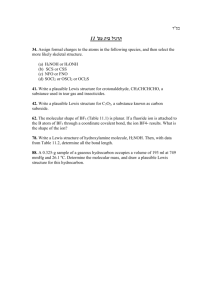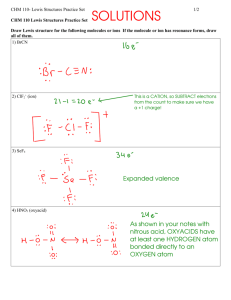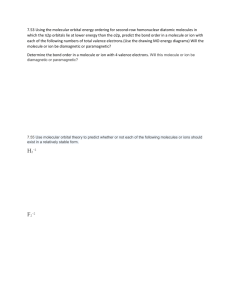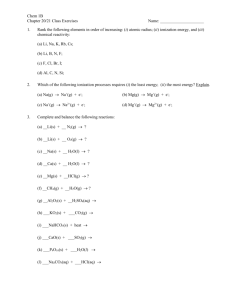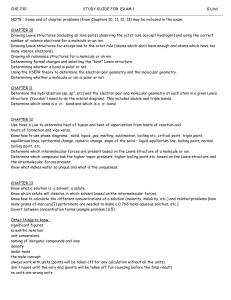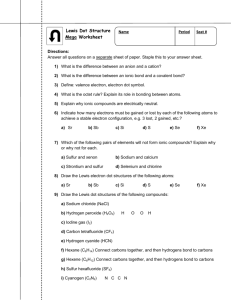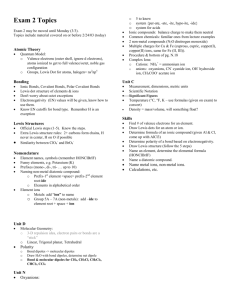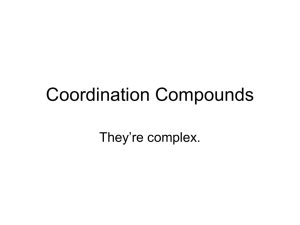Riverside City College Chem 1A (Spring) Test – 03 Full Marks: 35
advertisement
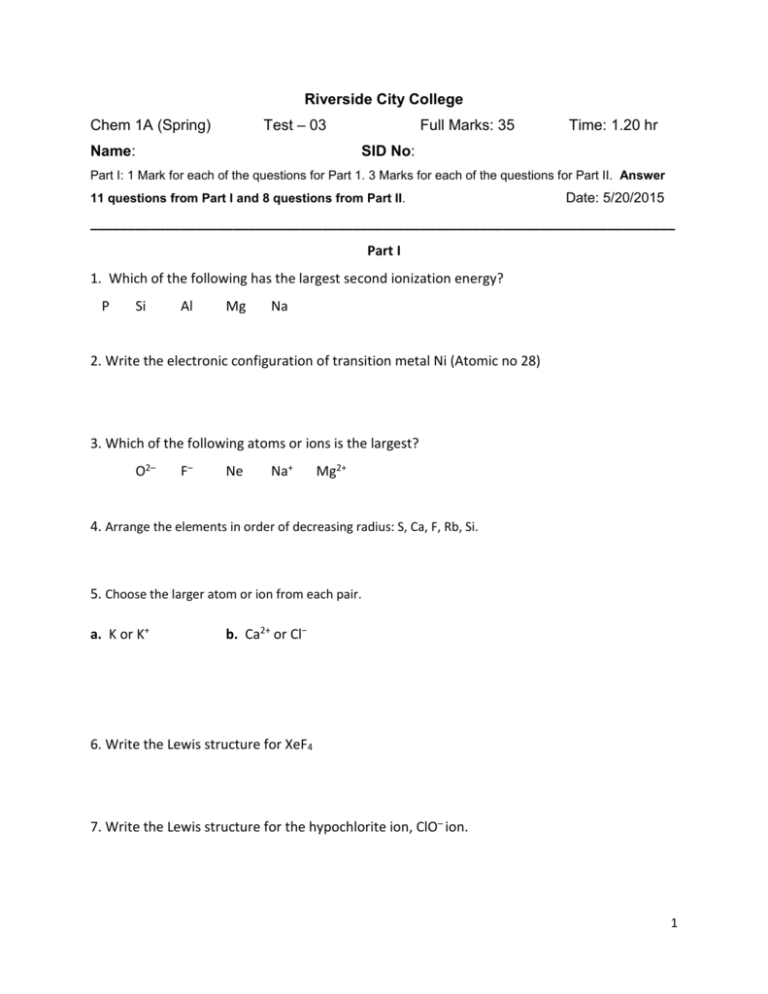
Riverside City College Test – 03 Chem 1A (Spring) Name: Full Marks: 35 Time: 1.20 hr SID No: Part I: 1 Mark for each of the questions for Part 1. 3 Marks for each of the questions for Part II. Answer 11 questions from Part I and 8 questions from Part II. Date: 5/20/2015 ______________________________________________________________________________ Part I 1. Which of the following has the largest second ionization energy? P Si Al Mg Na 2. Write the electronic configuration of transition metal Ni (Atomic no 28) 3. Which of the following atoms or ions is the largest? O2– F– Ne Na+ Mg2+ 4. Arrange the elements in order of decreasing radius: S, Ca, F, Rb, Si. 5. Choose the larger atom or ion from each pair. a. K or K+ b. Ca2+ or Cl− 6. Write the Lewis structure for XeF4 7. Write the Lewis structure for the hypochlorite ion, ClO– ion. 1 8. Arrange these in order of increasing magnitude of lattice energy: LiBr, KI, and CaO 9. Determine whether the bond formed between each pair of atoms is covalent, polar covalent, or ionic. a. Sr and F b. N and Cl 10. Write the Lewis Structure for NH3. 11. Write the Lewis structure for CO2. 12. Determine the molecular geometry of CCl4 13. What is the shape of the H2O molecule? 14. Which of the following should have the largest magnitude of lattice energy? MgO, CaO, SrO, BaO 15. Which of the following molecules violates the octet rule? CH4, NH3, H2O, SF4, PCl3 16. Which of the following bonds is the strongest? C−N, C=N, C≡N 17. What is thermodynamic state function? Give an example. 2 Part II 1. A 55.0 g aluminum block initially at 27.5 °C absorbs 725 J of heat. What is the final temperature of the aluminum? 2. When fuel is burned in a cylinder equipped with a piston, the volume expands from 0.255 L to 1.45 L against an external pressure of 1.02 atm. In addition, 875 J is emitted as heat. What is ΔE for the burning of the fuel? 3. Ammonia reacts with oxygen according to the equation: Calculate the heat (in kJ) associated with the complete reaction of 155 g of NH3. 3 4. Find ΔHrxn for the reaction: Use these reactions with known ΔH’s: 5. Use the standard enthalpies of formation to determine for the reaction: 6. What mass of CO2 (in kg) does the combustion of a 15-gallon tank of gasoline release into the atmosphere? Assume the gasoline is pure octane (C8H18) and that it has a density of 0.70 g/mL. 4 7. Write electron configurations for each element. a. Mg (12) b. P (15) c. Br (35) 8. Write the electron configuration and orbital diagram for each ion and determine whether each is diamagnetic or paramagnetic. a. Al3+ b. S2− c. Fe3+ 9. Write the electron configuration and orbital diagram for each ion and predict whether each will be paramagnetic or diamagnetic. a. Co2+ b. N3− c. Ca2+ 5 10. Draw Lewis structure of nitrate ion. Assign formal charges to each of the atoms in the nitrate ion (NO3–). 11. Assign formal charges to each atom in the resonance forms of N2O. Which resonance form is likely to contribute most to the correct structure of N2O? 12. Define system, surroundings, and a process in thermodynamics. When a process is said to be isothermal? 6 13. Find ΔHrxn for the following reaction: N2 + 2 O2 → 2 NO2 Based on the following data. 2 NO → N2 + O2 ΔH = –180 kJ 2 NO + O2 → 2 NO2 ΔH = –112 kJ 14. A 0.1250-g sample of octane (C8H18) is burned in a bomb calorimeter with a heat capacity of 5.1 × 102 J/°C. The temperature inside the calorimeter increases by 11.8 °C. What is the ΔE(in kJ/mol octane) for the combustion of octane? 15. Write the electronic configuration of Cr (24), Cu (29) and Mo (42) 7
